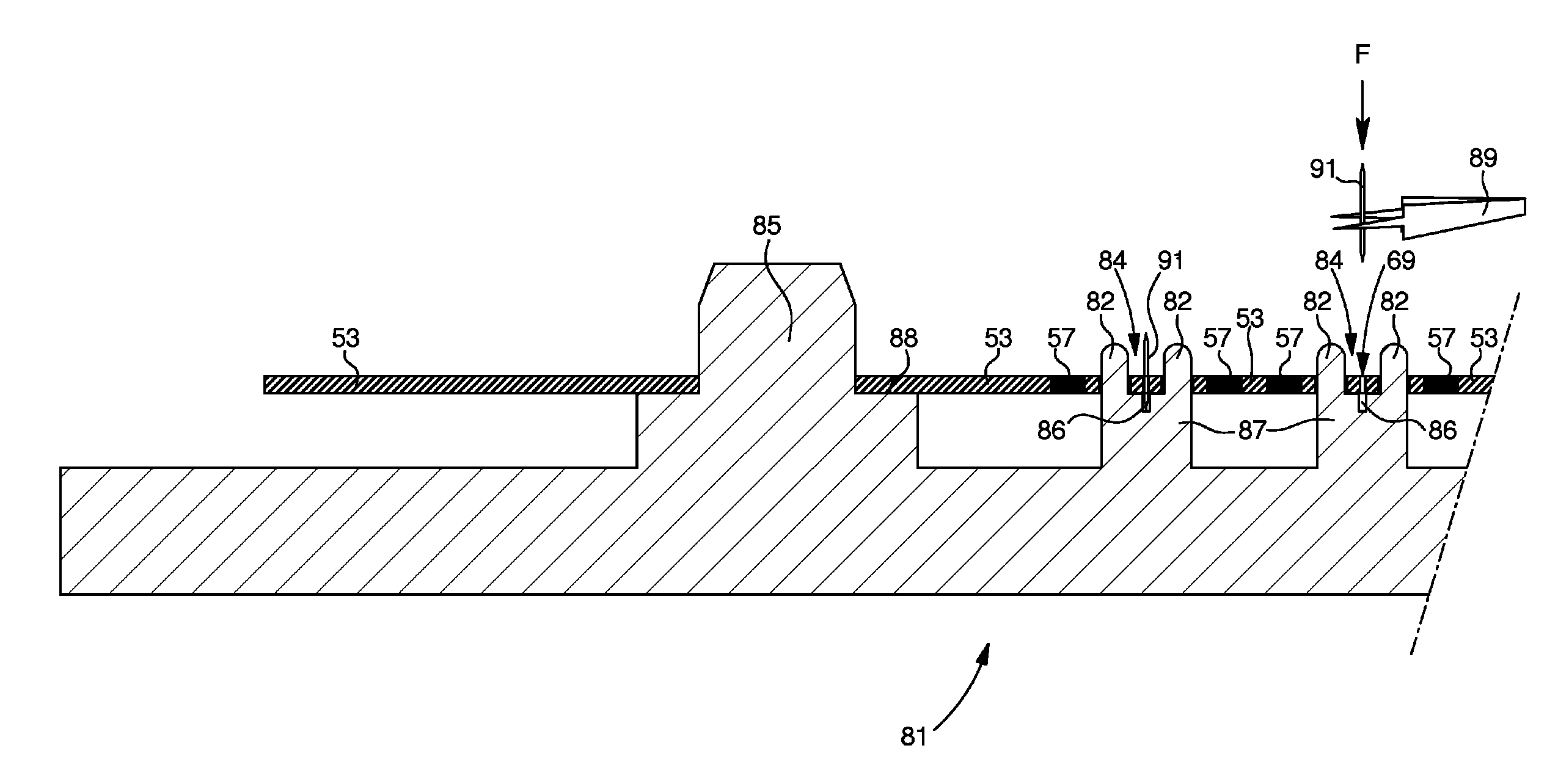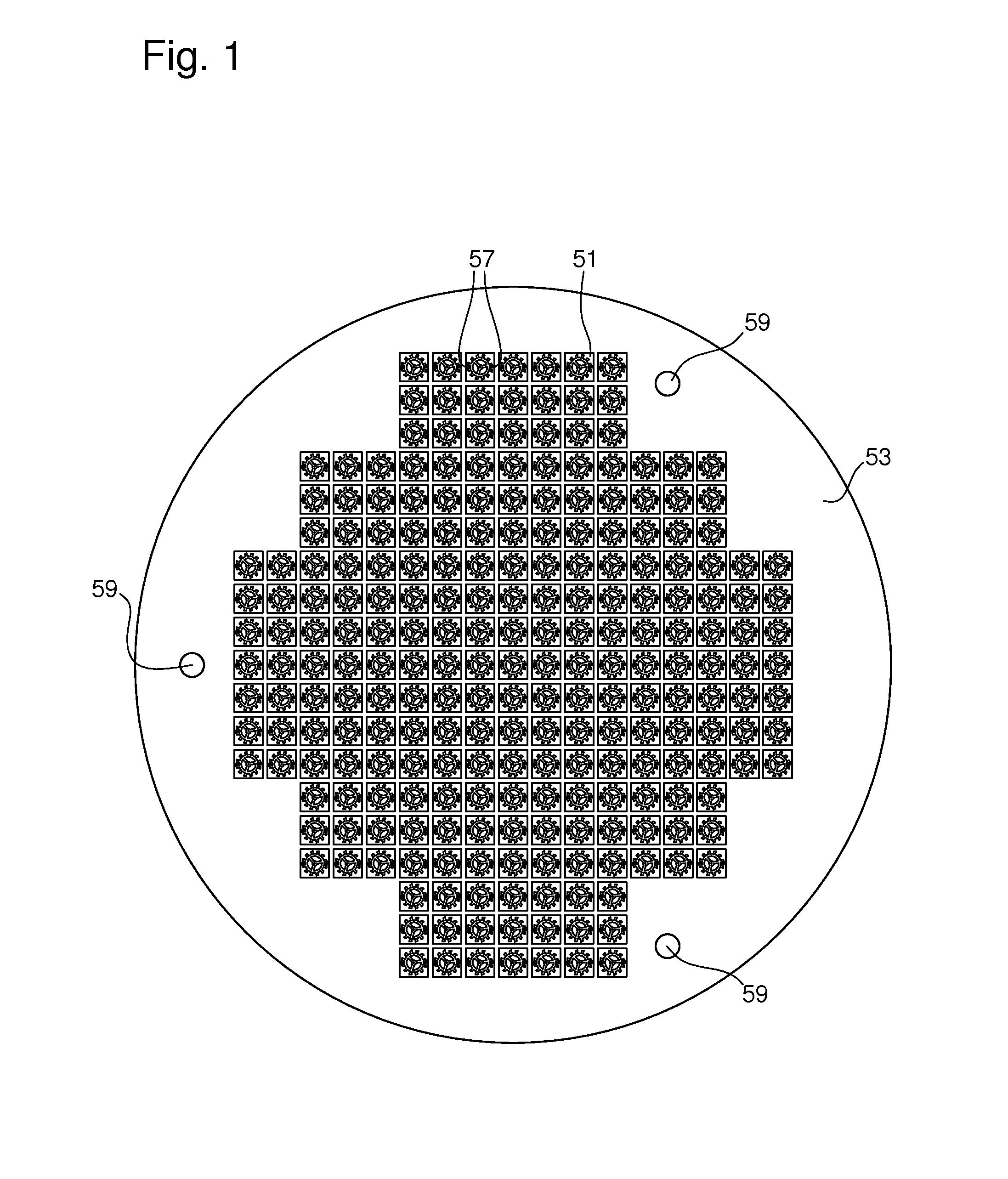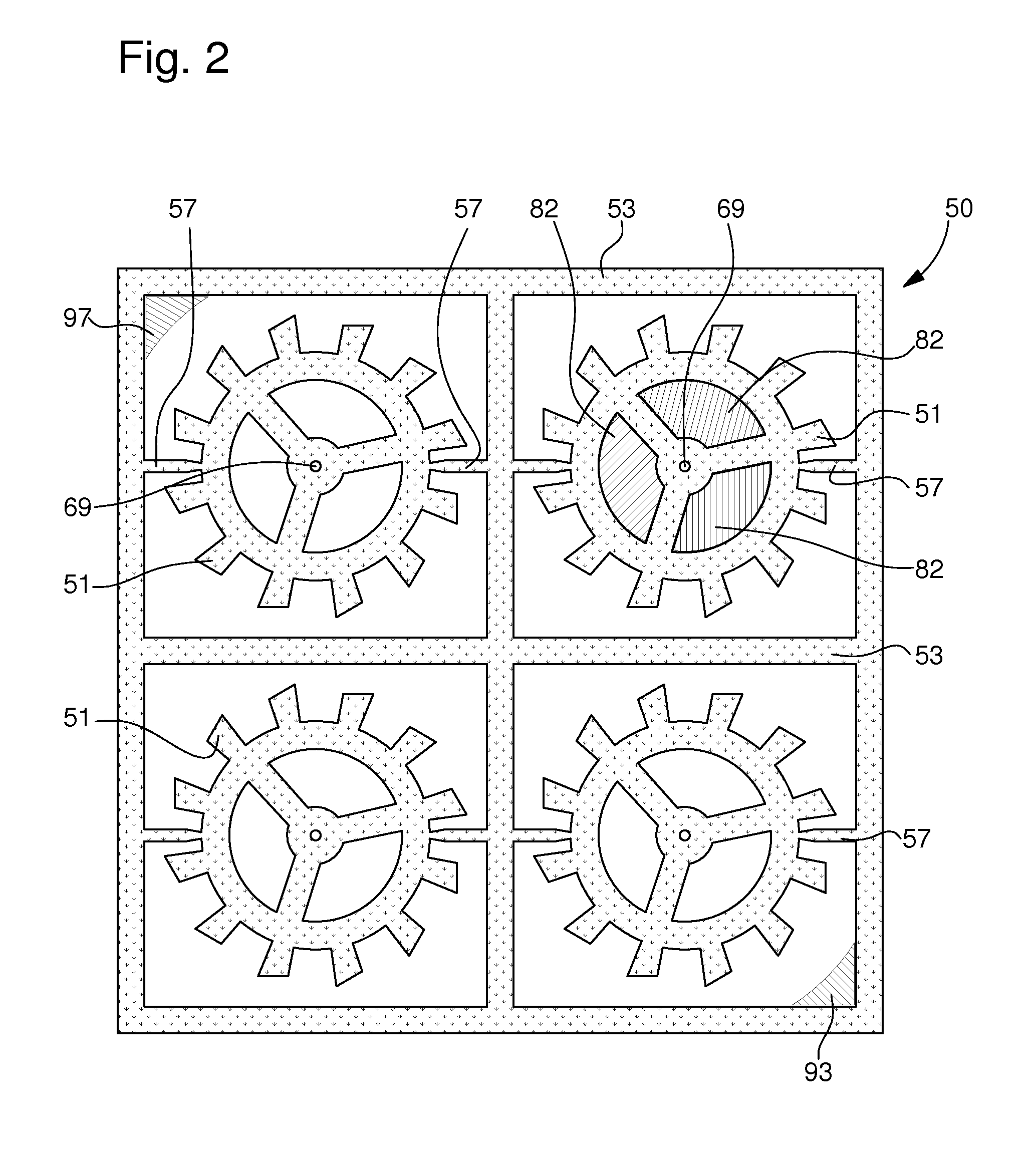Method of manufacturing a micromechanical part
a manufacturing method and technology of mechanical parts, applied in the field of manufacturing mechanical parts, can solve the problems of risk of damage to such parts, current manufacturing methods remain complex to implement, and it is not possible to apply micro-machinable materials to all timepiece parts, etc., to achieve high quality manufacturing, prevent any handling, and ensure the effect of pre-assembly
- Summary
- Abstract
- Description
- Claims
- Application Information
AI Technical Summary
Benefits of technology
Problems solved by technology
Method used
Image
Examples
first embodiment
[0042]From the main steps 3, 5, 7, 9, 11 and 13 each of the embodiments will now be explained. In a first embodiment, method 1 includes the consecutive steps 3, 5, 13 and 11 illustrated by a single line in FIG. 7. The first step 3 consists in taking a substrate 53 made of micro-machinable material.
[0043]Then the second step 5 consists in making patterns 50, each including a mechanical part 51 to be manufactured, through the entire substrate 53 by photolithography then etching. According to the first embodiment illustrated in the flow chart of FIG. 7, the second step 5 includes three phases 15, 17 and 19.
[0044]In a first phase 15, a protective mask is structured on substrate 53. Preferably, the protective mask is made using a photosensitive resin. The protective mask is thus formed using selective radiation for structuring said mask in a shape corresponding to each pattern 50 to be made. Because of this step 15, it will be possible to etch any flat shape selectively on substrate 53 i...
second embodiment
[0062] the third step 7 consists in mounting the etched substrate 53 on a base 55 so as to leave the top and bottom surfaces of substrate 53 accessible in order to prepare for deposition step 9. Step 7 includes phases 21 and 23.
[0063]FIG. 3 illustrates an example base 55 according to the second embodiment. Base 55 is a plate, the material of which can withstand the temperatures of step 9, such as, for example, a ceramic. In order to keep substrate 53 high relative to base 55, the base has pins 61 for cooperating with holes 59 made in substrate 53 during step 5. For the same reasons as base 55, pins 61 are preferably made of tungsten or tantalum.
[0064]Preferably, each generally cylindrical pin 61 has a low part 63 connected to a high part 65 of smaller section by means of a shoulder 67. The low part 63 is mounted approximately perpendicularly in base 55 in a fixed manner. In the extension of the high part 65 there is a chamfered column 60 that belongs to alignment means cited below.
[...
PUM
| Property | Measurement | Unit |
|---|---|---|
| thickness | aaaaa | aaaaa |
| photosensitive | aaaaa | aaaaa |
| tribological quality | aaaaa | aaaaa |
Abstract
Description
Claims
Application Information
 Login to View More
Login to View More - R&D
- Intellectual Property
- Life Sciences
- Materials
- Tech Scout
- Unparalleled Data Quality
- Higher Quality Content
- 60% Fewer Hallucinations
Browse by: Latest US Patents, China's latest patents, Technical Efficacy Thesaurus, Application Domain, Technology Topic, Popular Technical Reports.
© 2025 PatSnap. All rights reserved.Legal|Privacy policy|Modern Slavery Act Transparency Statement|Sitemap|About US| Contact US: help@patsnap.com



